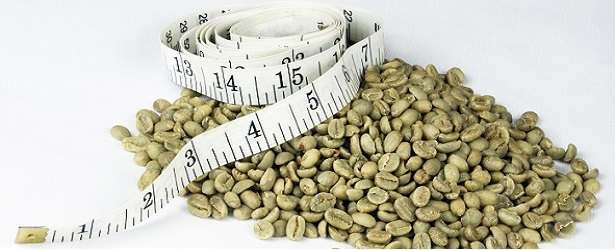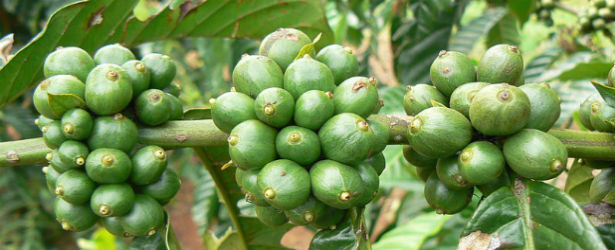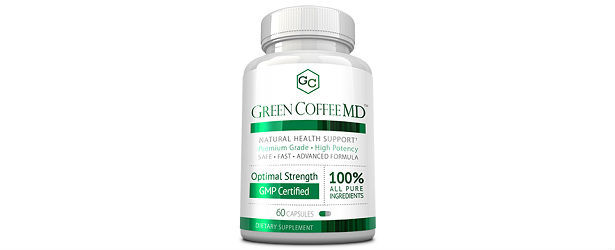
Type of Acids in Coffee
When it comes to roasted coffee, there are several types of acids that can be found within each little brown bean. It contains three main types of acid: the chlorogenic acid, alicyclic anphenolic acid and aliphatic acid. The amount of acids contained in a specific coffee bean will vary as several factors will affect the acid levels in the final product. Each coffee bean also holds varying levels of each type of acid. Here are the various types of acids that are commonly found in coffee plants.
Tannic Acid or Gallotanic Acid
 This acid that is found in coffee plants still poses a mystery to scientists as to what its main purpose is. As of this moment, the popular theory is that it is a sort of defense mechanism for the plant as it produces an unpleasant taste which helps in keeping animals from eating the plant. It is also being looked at as helping the coffee plant stave away dangerous pathogens.
This acid that is found in coffee plants still poses a mystery to scientists as to what its main purpose is. As of this moment, the popular theory is that it is a sort of defense mechanism for the plant as it produces an unpleasant taste which helps in keeping animals from eating the plant. It is also being looked at as helping the coffee plant stave away dangerous pathogens.
Chlorogenic Acid (CGA)
Chlorogenic acids make up most of the coffee bean compound and also give it that signature bitter and acidic taste. CGA content varies from each type of coffee plant but it also decreases when roasted. Scientists are now looking at CGA as a healthy and safe ingredient that assist the body in losing weight due to its ability to help the body increase its metabolism.
Aliphatic Acids
This acid is also known as amino acids. A coffee bean contains a dozen types of aliphatic acids which include: citric, acetic, lactic, pyruvic and malic acids just to name a few. A natural green coffee bean usually contains a minute amount of this acid which increases when roasted.
Alicyclic and Phenolic Acids
These two acids are polyphenols that are known to contain high amounts of antioxidants. Green coffee bean extracts are known to contain higher levels of polyphenol which gives it more potency in terms of antioxidants. Recent studies are also looking at polyphenols as it may contain a level of anti-carcinogenic capabilities.
Fatty Acids
A study was conducted which revealed that coffee also contains fatty acids. Researchers discovered at least a dozen types of fatty acids in coffee extracts. Coffee oil contains stearic, palmitic, oleic, linoleic and linolenic acid. Coffee is now being looked at as a possible high source of vital fatty acids in the future.
What Affects the Level of Acidity in Coffee?
There are several factors to look at that determines the amount of acids a coffee will contain in its final form. The temperature the coffee bean is roasted in will greatly affect the level of CGA it contains. The brewing technique will also lend in to the final results of its acid levels. Simply put, the darker the coffee bean becomes the lower the acid level will be. The area where the coffee plant was harvested will also factor in as coffee plants that were grown in high altitude areas or near volcanoes will contain a significantly higher acidity.
TOP 5
GREEN COFFEESupplements |
|||||
| Green Coffee Premium | Natural Factors Green Coffee Bean | Wild Health Green Coffee | Vita-Web Pure Green Coffe Bean Extract | Just Goodness Green Coffee Bean | |
|---|---|---|---|---|---|
| 1 | 2 | 3 | 4 | 5 | |
| Price (1 bottle) Price (6 bottles) Best Value |
$49.95 $139.80 |
$26.55 $159.30 |
$98.00 $588.00 |
$32.00 $192.00 |
$29.99 $179.94 |
| Overall Rating | 99.50% | 89.20% | 78.60% | 74.00% | 68.50% |
| Effectiveness |





|





|





|





|





|
| Speed of Results | Extremely Fast | Good | Average | Average | Slow |
| Quality of Ingredients | Premium | Good | Good | Average | Unknown |
| Customer Satisfaction Evaluation | 99.40% | 84% | 78% | 65% | 61% |
| Safety Evaluation | Safe for Use | Safe for Use | Safe for Use | Safe for Use | Safe for Use |
| Customer Service Rating |





|





|





|





|





|
| Reorder Rate | Highest | Good | Good | Average | Average |
| Return Policy | Risk Free | Good | Unclear | Risk Free | Unclear |
| Success Rate | 99.40% | 81.00% | 75% | 69% | 62% |

 Subscribe Now
Subscribe Now











